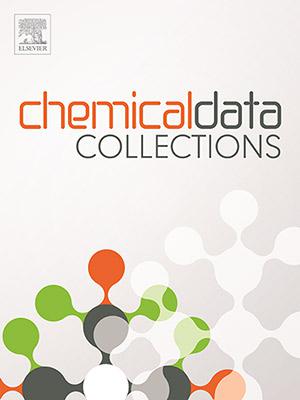Theoretical and experimental research of the ability of quinolin-8-ol compound derivative to inhibit C-steel corrosion in a molar hydrochloric acid environment
IF 2.7
Q2 Chemistry
引用次数: 0
Abstract
In this work, the effectiveness of 5-((2-(4-nitrophenyl)-4,5-diphenyl-1H-imidazol-1-yl)methyl)quinoline-8-ol (NDIQ) as a corrosion inhibitor for carbon- steel (C/steel) of 1.0 M hydrochloric acid was examined using electrochemical methods, scanning electron microscopy (SEM-EDS), and ultraviolet-visible spectrophotometry (UV–Vis). At a concentration of 1 × 10−3M and a T of 303 K, the highest corrosion inhibition efficiency of NDIQ reached 97.4 %. The results gathered through polarization curve analysis (PCA) showed that NDIQ acts as a mixed/type inhibitor. Additionally, the adsorption of molecules onto the C/steel surface was modeled using density functional theory, and molecular dynamics simulations (DFT-MD). Theoretical studies based on quantum chemistry and molecular dynamics simulations confirmed the remarkable adsorption of quinoline-8-ol on the metal sample.
喹啉-8-醇化合物衍生物在摩尔盐酸环境中抑制c -钢腐蚀能力的理论和实验研究
本文采用电化学、扫描电子显微镜(SEM-EDS)和紫外可见分光光度法(UV-Vis)研究了5-((2-(4-硝基苯基)-4,5-二苯基- 1h -咪唑-1-基)甲基喹啉-8-醇(NDIQ)作为碳钢(C/钢)在1.0 M盐酸中的缓蚀效果。在浓度为1 × 10−3M、温度为303 K时,NDIQ的缓蚀效率最高,达到97.4%。极化曲线分析(PCA)结果表明,NDIQ为混合型缓蚀剂。此外,利用密度泛函理论和分子动力学模拟(DFT-MD)模拟了分子在C/钢表面的吸附。基于量子化学和分子动力学模拟的理论研究证实了喹啉-8-醇在金属样品上的显著吸附。
本文章由计算机程序翻译,如有差异,请以英文原文为准。
求助全文
约1分钟内获得全文
求助全文
来源期刊

Chemical Data Collections
Chemistry-Chemistry (all)
CiteScore
6.10
自引率
0.00%
发文量
169
审稿时长
24 days
期刊介绍:
Chemical Data Collections (CDC) provides a publication outlet for the increasing need to make research material and data easy to share and re-use. Publication of research data with CDC will allow scientists to: -Make their data easy to find and access -Benefit from the fast publication process -Contribute to proper data citation and attribution -Publish their intermediate and null/negative results -Receive recognition for the work that does not fit traditional article format. The research data will be published as ''data articles'' that support fast and easy submission and quick peer-review processes. Data articles introduced by CDC are short self-contained publications about research materials and data. They must provide the scientific context of the described work and contain the following elements: a title, list of authors (plus affiliations), abstract, keywords, graphical abstract, metadata table, main text and at least three references. The journal welcomes submissions focusing on (but not limited to) the following categories of research output: spectral data, syntheses, crystallographic data, computational simulations, molecular dynamics and models, physicochemical data, etc.
 求助内容:
求助内容: 应助结果提醒方式:
应助结果提醒方式:


